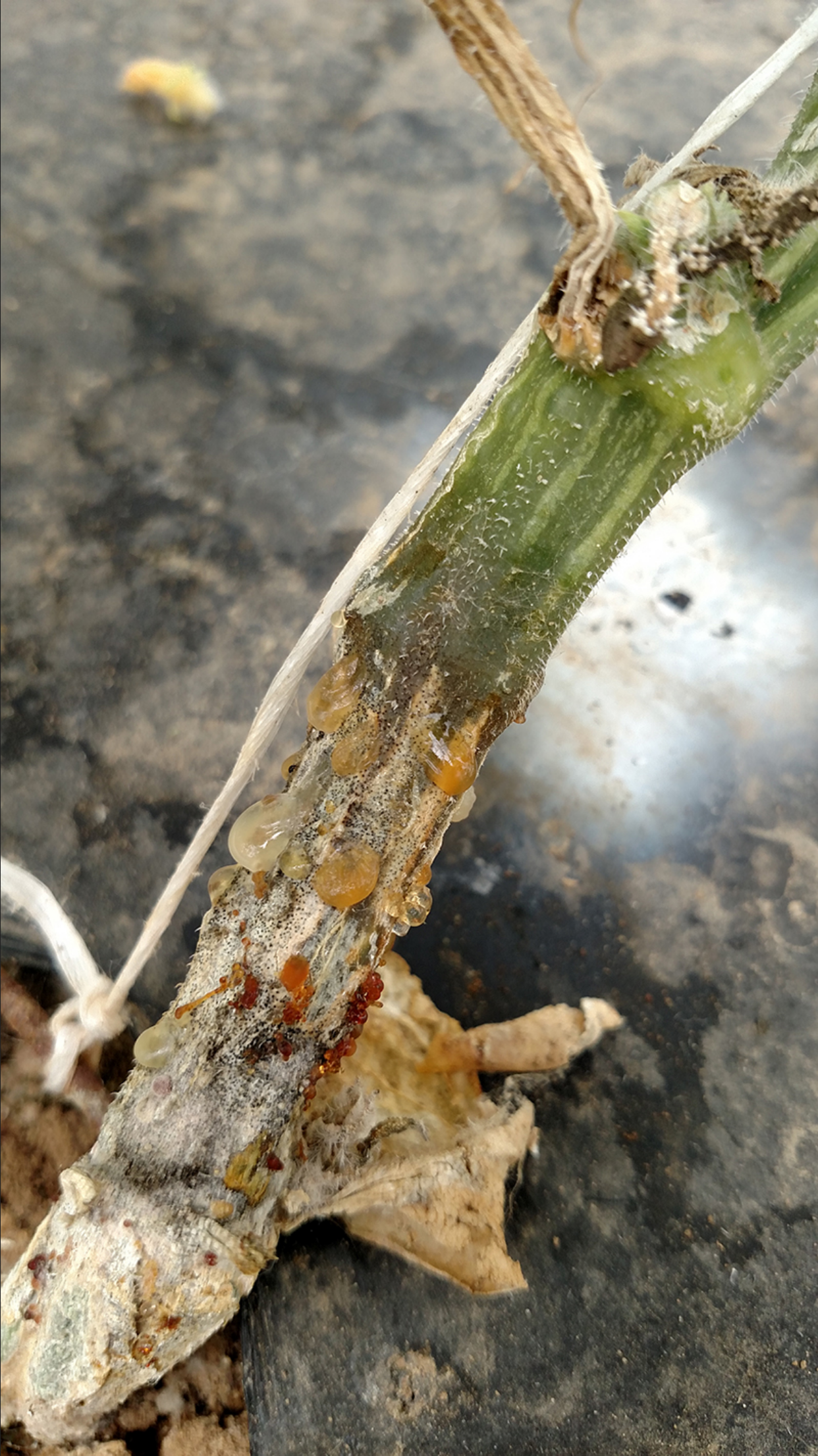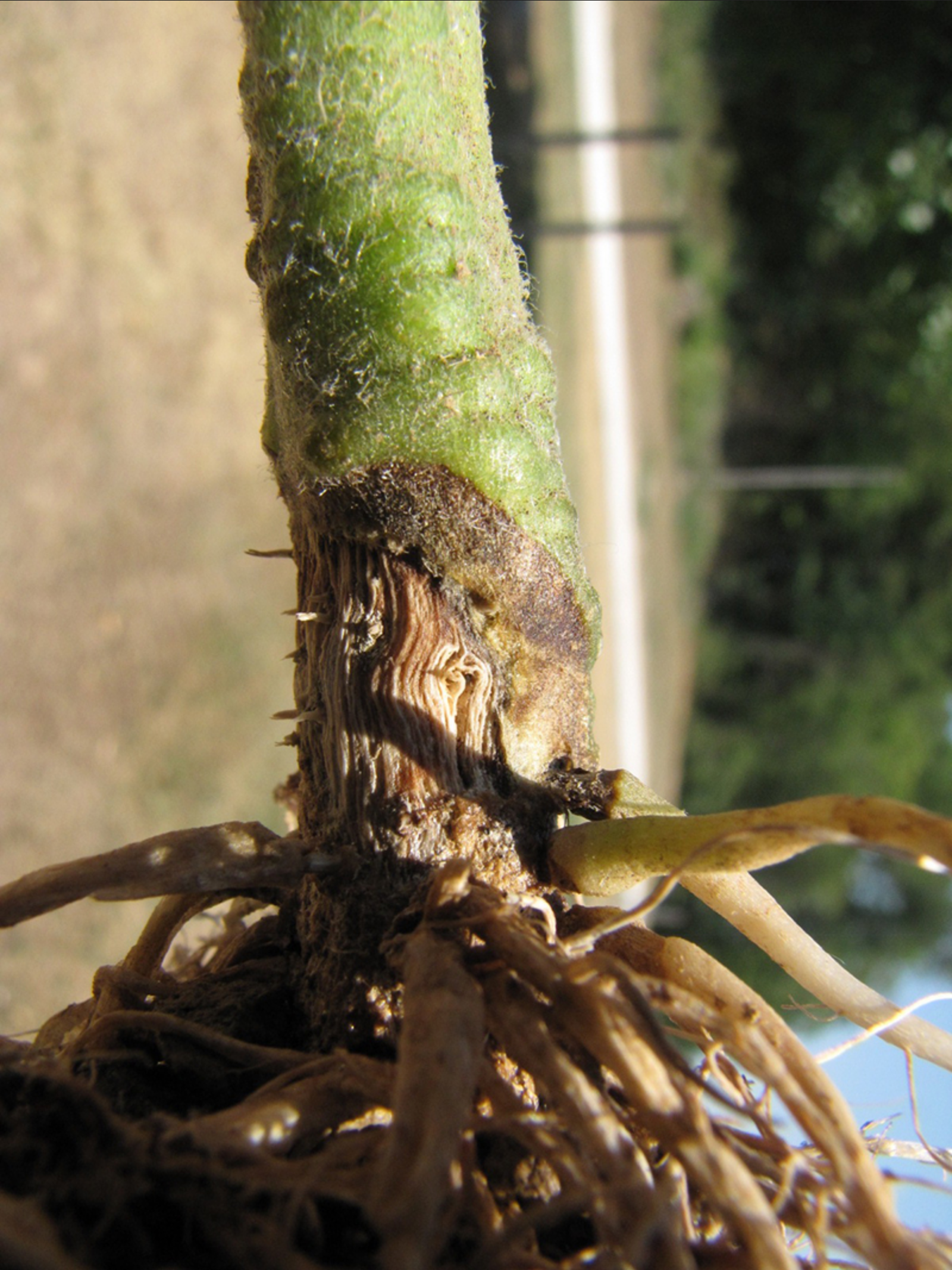Picture of the Week
August 22, 2022
Charcoal Rot
Dan Egel, Professor-SWPAC, Botany and Plant Pathology, Purdue University
There are many reasons why a cucumber plant might wilt (Figure 1). Of course, plants may wilt if there is not enough water. If insufficient water was the cause of the wilt in Figure 1, one might expect to see the entire row of cucumbers wilting. Instead, Figure 1 shows just one plant wilting. And the soil around the plant was sufficiently moist. A second reason that a cucumber plant might wilt is the disease bacterial wilt spread by cucumber beetles. However, no beetles or beetle feeding were observed. One might guess that there was a root problem that caused the cucumber plant to wilt. As one knelt to start to investigate a root problem, the base of the plant would reveal the symptoms of charcoal rot (Figure 2).
Click image to enlarge
 Figure 1: Perhaps the first symptom one might observed of charcoal rot of cucumber is the wilting of the plant.
Figure 1: Perhaps the first symptom one might observed of charcoal rot of cucumber is the wilting of the plant.  Figure 2: Charcoal rot can be recognized by the light brown necrotic area at the base of the cucumber stem. Advanced symptoms can include the myriad dark fungal structures embedded in the necrotic area that gives charcoal rot its name. The droplets of sap seen here may be as a result of infection as seen here or wounding.
Figure 2: Charcoal rot can be recognized by the light brown necrotic area at the base of the cucumber stem. Advanced symptoms can include the myriad dark fungal structures embedded in the necrotic area that gives charcoal rot its name. The droplets of sap seen here may be as a result of infection as seen here or wounding. Charcoal rot is caused by the fungus Macrophomina phaseolina. This fungus can survive several years in the soil without a host. In addition, several hosts have been listed for this disease including strawberry, sorghum, potato, corn and soybean. Cucumber has now been listed as a host in Indiana. Charcoal rot is favored by hot, dry soils. Apparently, the environment in this high tunnel were favorable for the disease.
Management of charcoal rot is dependent on crop rotation with less susceptible hosts. Plants should be managed so as to avoid stresses such as fertility, irrigation and other diseases. Some varieties may be less susceptible to charcoal rot.
If you suspect charcoal rot, be sure to get an official diagnosis. Click on the images below to download a physical submission form and to view another article by Dan Egel on Fusarium crown rot of tomato.


